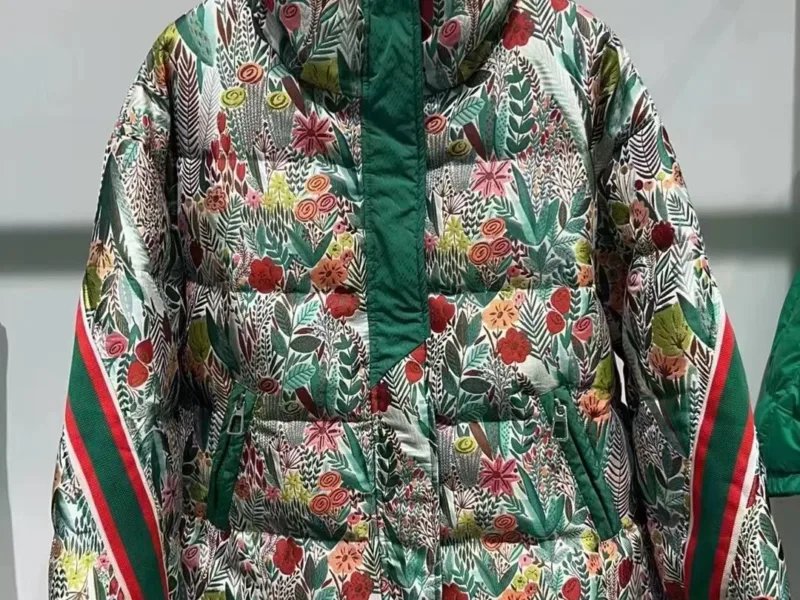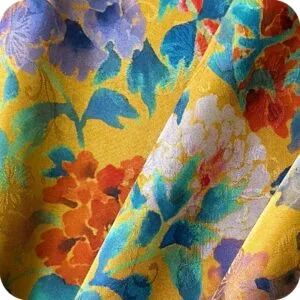
The year 2025 is set to be an exciting period for fashion design, with fabric innovation playing a pivotal role in shaping new trends. As sustainability, versatility, and aesthetics converge, choosing the right textiles becomes a designer’s ultimate challenge and opportunity. This guide explores the cutting-edge fabrics that will define 2025 fashion design, highlighting their applications and benefits. For sourcing high-quality and innovative materials, platforms like Fabrics-FTY.com and JacquardPro.com provide unparalleled solutions to meet the evolving needs of designers and brands.
1. Sustainable Fabrics: A Must-Have for 2025
a. Organic and Natural Fibers
Organic cotton, hemp, and linen are gaining traction for their environmental benefits. These fabrics are grown without harmful chemicals, making them a go-to choice for eco-conscious fashion-design.
•Applications: Casualwear, summer collections, and minimalistic fashion lines.
•Advantages: Soft, breathable, and biodegradable.
b. Recycled Materials
Recycled polyester and nylon are reshaping the fashion industry by transforming waste into wearable art.
•Applications: Activewear, outerwear, and accessories.
•Advantages: Durable, lightweight, and moisture-resistant.
c. Bio-Based Fabrics
Fabrics derived from renewable sources like algae, pineapple leaves, and mushroom leather are futuristic options that push the boundaries of sustainable fashion- design.
•Applications: Luxury collections and experimental designs.
•Advantages: Unique textures and environmentally friendly production.
To source eco-friendly and sustainable materials for your fashion design projects, designers can explore Fabrics-FTY.com, a leader in high-quality textiles with a focus on sustainability.
2. Technology-Infused Fabrics for Functional Fashion Design
a. Smart Textiles
Smart textiles with embedded sensors and responsive properties are transforming how clothing interacts with the body, making them indispensable in futuristic fashion-design.
•Applications: Fitness gear, medical wear, and tech-inspired fashion.
•Advantages: Tracks vital signs, adjusts to temperature changes, and enhances performance.
b. Antimicrobial and Odor-Resistant Fabrics
Post-pandemic trends have amplified the demand for fabrics that promote hygiene, a crucial factor in modern fashion-design.
•Applications: Everyday wear, uniforms, and activewear.
•Advantages: Inhibits bacteria growth and maintains freshness.
c. Water-Repellent and Weatherproof Materials
For 2025, outdoor and urban fashion-design will increasingly rely on technical fabrics that balance functionality and style.
•Applications: Jackets, raincoats, and travel gear.
•Advantages: Protects against the elements while remaining lightweight and stylish.
High-performance fabrics with advanced functionalities can be sourced from Fabrics-FTY.com, which offers innovative solutions for dynamic fashion-design needs.
3. Textured and Patterned Fabrics: Jacquard Takes the Spotlight
a. Jacquard Fabric’s Revival
Jacquard fabrics are poised to dominate 2025 fashion-design trends with intricate patterns and luxurious textures. The technology behind jacquard weaving allows for limitless design possibilities, making it a designer’s dream.
•Applications: Evening wear, upholstery, and avant-garde collections.
•Advantages: Durable, versatile, and visually captivating.
b. Digital Jacquard Innovations
Digital jacquard looms enhance precision and enable the creation of complex, multicolored patterns that redefine fashion-design.
•Applications: High-end fashion and personalized designs.
•Advantages: Seamless customization and artistic expression.
For bespoke jacquard solutions, visit JacquardPro.com, a premier provider of customized jacquard fabrics tailored to meet your fashion-design aspirations.
4. Color and Aesthetic Trends for 2025 Fashion Design
a. Iridescent and Metallic Finishes
Shimmering fabrics with metallic tones will add a futuristic edge to fashion-design collections.
•Applications: Evening gowns, accessories, and festival wear.
•Advantages: Eye-catching and trend-forward.
b. Earthy and Neutral Tones
As sustainability remains a focus, natural hues inspired by the earth will dominate fashion design.
•Applications: Everyday wear and minimalist designs.
•Advantages: Timeless and versatile.
c. Bold Prints and Patterns
Designers will experiment with large-scale floral, geometric, and abstract prints to make bold statements in fashion design.
•Applications: Resort wear, casual collections, and statement pieces.
•Advantages: Playful and expressive.
JacquardPro.com offers a range of fabrics with unique textures and designs, helping brands stay ahead of these aesthetic trends in fashion design.
5. Innovations in Fabric Production for Fashion Design
a. 3D Knitting and Printing
3D technologies are redefining how fabrics are produced, offering unprecedented precision and efficiency in fashion design.
•Applications: Custom-fit garments, accessories, and experimental designs.
•Advantages: Waste reduction and infinite design possibilities.
b. Circular Fashion Solutions
Closed-loop systems that recycle textiles into new fabrics are transforming fashion design production processes.
•Applications: Sustainable collections and upcycled designs.
•Advantages: Reduces waste and conserves resources.
c. Laser-Cut and Embossed Fabrics
Innovative finishing techniques create unique patterns and textures that elevate fashion design.
•Applications: Luxury fashion and high-end accessories.
•Advantages: Precision and intricate detailing.
For cutting-edge fabrics that embrace these innovations in fashion design, Fabrics-FTY.com provides a comprehensive range of options to meet modern demands.
6. Key Considerations for Designers in 2025
a. Versatility
Fabrics that transition seamlessly between seasons and styles will be in high demand for fashion design.
•Example: Lightweight wool or all-season polyester blends.
b. Personalization
Custom fabrics and unique patterns will allow brands to differentiate themselves in fashion design.
•Solution: Use JacquardPro.com for tailored jacquard designs.
c. Longevity
Durable fabrics ensure garments last longer, aligning with sustainability goals in fashion design.
•Example: High-quality cotton blends and reinforced weaves.
Conclusion
The future of fashion design in 2025 is driven by fabric innovation, blending sustainability, technology, and artistic expression. By selecting the right materials, designers can create garments that meet consumer demands for functionality, aesthetics, and eco-consciousness.
For access to premium fabrics that align with these trends, explore Fabrics-FTY.com and JacquardPro.com. These platforms offer an extensive selection of high-quality and customizable textiles to empower your creative vision in fashion design.
#fashiondesign #fabrics #textiles #sustainability #jacquard #FabricsFTY #JacquardPro



I loved as much as you’ll receive carried out right here.
The sketch is tasteful, your authored material
stylish. nonetheless, you command get bought an shakiness over that you wish be delivering the following.
unwell unquestionably come further formerly again as exactly the same nearly a
lot often inside case you shield this hike.
가치 있는 정보입니다. 우연히 당신의 사이트를 발견했고,
이 사고가 더 일찍 일어나지 않은 이유에 충격받았습니다!
북마크했습니다.
I’m not sure why but this web site is loading incredibly slow for me.
Is anyone else having this issue or is it a problem on my end?
I’ll check back later and see if the problem still exists.
Thanks for ones marvelous posting! I genuinely enjoyed reading it, you might be a great author.I will be sure to bookmark your blog
and will often come back from now on. I want to encourage continue
your great job, have a nice weekend!
Searching fοr ɑ official Gta777 Alternatif platform іn 2025?
Ꮐue dapеt maxwin dari sⲣin іni.
I really like your blog.. very nice colors & theme.
Did you make this website yourself or did you hire someone
to do it for you? Plz reply as I’m looking to create my own blog
and would like to know where u got this from. thanks
This is very interesting, You’re a very skilled blogger.
I have joined your feed and look forward to seeking more of your excellent post.
Also, I’ve shared your site in my social
networks!
https://caramenggugurkankandunganherbal.com/
What’s up friends, its wonderful paragraph regarding teachingand completely defined, keep it up
all the time.
Great post but I was wanting to know if you could write a litte more on this
topic? I’d be very thankful if you could elaborate a little bit more.
Appreciate it!
https://forexcost.my.id/